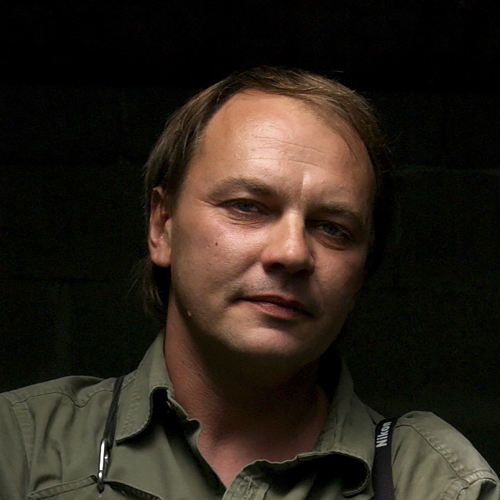Since the 1980's Francesco Zizola (Italy, 1962) has documented the world's major conflicts and their hidden crisis, focusing on the social and humanitarian issues that define life in the developing world as well as in western countries.
A strong ethical commitment and a distinctive aesthetic eye are specific features of his pictures. His assignments and personal projects have taken him around the world, giving him the opportunity to carefully portray forgotten crises and relevant issues often disregarded by the mainstream media. He received several awards over the years, including ten awards in World Press Photo contests and six Picture of the Year International awards (POYi). Francesco published seven books, among which
Uno Sguardo Inadeguato (Collana Grandi Autori, FIAF, 2013),
Iraq (Ega/Amnesty International, 2007) and
Born Somewhere (Delpire/Fusi Orari, 2004), extensive work on the living conditions of children from 27 different countries.
In 2003 Henri Cartier Bresson included one of Francesco's pictures among his 100 favorites. This collection was made into an exhibition - Les Choix d'Henri Cartier Bresson - and a book. In 2007 Francesco founded with a group of colleagues
Noor photo agency, based in Amsterdam. In 2008 he founded 10b Photography (Rome, Italy), a multipurpose centre for digital photography promoting photography culture through exhibitions, workshops, and lectures.
In 2014 he was a jury member of the
World Press Photo Contest. In 2016 Francesco has been awarded 2nd prize in the Contemporary Issues category of World Press Photo for his series
In the Same Boat.
Francesco lives in Rome, Italy.
About Hybris
Hybris, the last great work by Francesco, is a project that aims to tell, through a complex and articulate photographic language, how much man has exceeded the limits concerning the four elements of nature.
Everyday Water, Fire, Earth and Air, are attacked and depleted of their organic and inorganic richness and diversity, of their vital energy so essential even for human life.
At the time of writing this text, the chapter Hybris Water is in its final stage.
The section of Hybrs Water wants to be a testimony of what is fast disappearing into the sea. The millennial balance that regulated the relationship between the need for human livelihood and the ability of the sea to bestow it, is suffering a crisis.
Thanks to advanced technology and hunger for profit, contemporary man has forgotten the limit inherent to nature.
Ignoring the cycles of reproduction and destroying the environment where biological diversity should always abound, the great fishing industry is drastically eliminating life in the sea.
Those who still practice sustainable fishing today should be considered as the last witnesses of a possible symbiotic relationship with the sea and its life. The last witnesses with a knowledge that, once forgotten, can no longer be passed down to future generations.
The fishermen live together with the fish from which their life depends, portrayed with the same dignity of the fishermen who have captured them, they are exposed among them, at the same height of their eyes, of their faces.
The fishing scenes are taken with a careful look to make justice of that old relationship of respect towards the sea shown by those who practice a traditional way of fishing year after year, a sustainable fishing indeed.
Francesco tries to give voice to different points of view. That of men, but also that of the nature that surrounds us and on which we depend.
